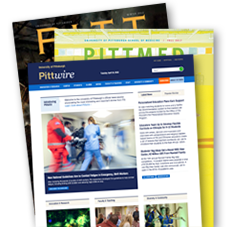Battery Expert at Pitt Available to Comment on Boeing 787 Fires
PITTSBURGH—An investigation by the Federal Aviation Administration is under way to determine what caused a new type of battery to catch fire on two Boeing 787 planes within nine days. These two incidents—one happening in Boston and another in Japan—highlight the need for Boeing and other corporations to examine their new use of lithium-ion batteries in airplanes, according to University of Pittsburgh researchers.
“Lithium-ion battery technology is indeed the flagship energy storage system at present. Unfortunately, thermal runaway—changes to batteries brought on by temperature—has always been a safety issue for lithium-ion systems,” says Prashant N. Kumta, Edward R. Weidlein Chair in Pitt’s Swanson School of Engineering and professor in the Swanson School’s Departments of Bioengineering, Chemical and Petroleum Engineering, and Mechanical Engineering and Materials Science.
The 787, a new model from Boeing, was praised for its use of lighter composite materials and more fuel-efficient engines. In keeping with this efficiency, the lithium batteries replaced mechanical and hydraulic systems found in former aircrafts—but at a cost.
“These incidents make it clear that there are still challenges that need to be addressed by scientists and engineers,” Kumta says.
Kumta is available to comment on battery technologies and further challenges Boeing might be facing in light of these fire-related incidents. He may be reached at 412-849-2162 or pkumta@pitt.edu.
Kumta’s research interests cover two broad areas of energy storage and biomaterials. His current research in the energy storage arena has been directed toward understanding the theory of solid-state materials while developing novel, low-temperature chemical, mechano-chemical, and thin-film approaches to synthesizing architectures for lithium-ion applications. Kumta joined Pitt in 2007, after 17 years with Carnegie Mellon University. He obtained his MS and PhD in Materials Science and Engineering degrees from the University of Arizona. He is the recipient of the Research Initiation Award from the National Science Foundation and is the author or coauthor of more than 200 refereed journal publications.
###
1/17/13/mab/cjhm
Media Resources
Schools of the Health Sciences Media Relations
For more information about Pitt's schools of dental medicine, health and rehabilitation sciences, medicine, nursing, pharmacy, and public health, click here >
To locate stories from health science schools prior to 2013, visit the UPMC news archives »
Urgent Question?
University of Pittsburgh news reps are available to answer urgent media inquiries. Outside of regular business hours (Mon-Fri, 8:30 a.m.-5 p.m.), please email us at media@pitt.edu.
News reps for University of Pittsburgh Health Sciences schools can be reached outside of regular business hours through the paging operator at 1+412-647-2345.


